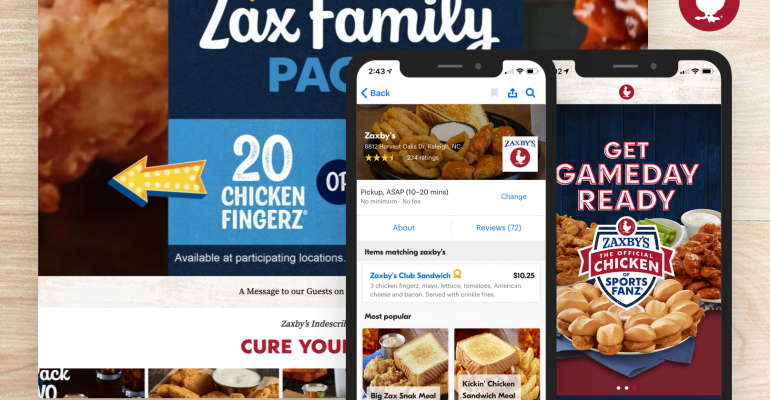Grubhub said a combination of Grubhub-funded coupons, increased advertising spend and lower diner prices drove incremental food sales of roughly $200 million to its restaurant partners during the coronavirus pandemic.
The Chicago-based delivery operator, which was acquired by Just Eat Takeaway in June, did not host a conference call. But CEO Matt Maloney and Adam DeWitt, chief financial officer, published a jointly written letter to shareholders. Since early May, the company has added about 25,000 new restaurants, which includes new or expanded relationships with top chains such as Burger King, Chipotle Mexican Grill, Dunkin’, McDonald’s and Subway.
Here are highlights from the letter and the company’s earnings:
Pandemic is fueling sales, higher check averages
Total revenue for the quarter increased 41% to $459.3 million. Gross food sales grew 59% to $2.3 billion.
The company had 27.5 million active diners, up 35% from last year and up 3.6 million from the first quarter. Daily orders grew 32% to 647,100.
Like restaurants, Grubhub is also seeing average check increase. Average order is at $39. That's up 20% year-over-year and up 14% sequentially, Grubhub said.
While growth in orders and sales have been fueled by the pandemic, Maloney and DeWitt said the surge in delivery orders looks to be sticky.
“Given the strength we continue to see in the third quarter, we now believe the pandemic has been less of a temporary demand spike and more of a permanent catalyst putting our business on a higher, sustained trajectory,” according to the joint shareholder letter. “We had millions of new diners trying Grubhub for the first time, meaningfully improved diner retention and frequency for new and old diners alike.”
Supporting restaurants
Before the pandemic, Grubhub’s relationships with its restaurant partners had grown tense as reports highlighted the company’s suspicious business tactics aimed at boosting commission fees.
That tension escalated during the early days of the pandemic when delivery was one of only a few ways restaurants could generate any revenue.
Grubhub leaders said it has spent about $100 million to “drive more eyeballs” to restaurants listed on the company’s app, or marketplace, during the pandemic. The capital investment included supporting programs that generate revenue for restaurants, such as lowering diner fees, adding coupon promotions and increasing advertising.
“We succeeded,” according to the letter. “Through these various actions, we believe we drove an incremental $200 million of GFS [gross food sales] to our restaurant partners during the quarter that they would not have received otherwise.”
During the pandemic, Grubhub Ultimate, the company’s integrated platform that helps drive takeout orders, added QR code technology to allow for contactless ordering. There’s no additional marketing fee for these orders.
For the quarter, Grubhub posted a net loss of $45.4 million, compared to net income of $1.3 million in the second quarter of 2019. For the quarter, the company lost 77 cents per order compared to a 3-cent per order gain last year, same period.
Grubhub’s platform features more than 300,000 restaurants. Of those, it partners with about 225,000 restaurants in 4,000 U.S. cities.
For our most up-to-date coverage, visit the coronavirus homepage.
Contact Nancy Luna at [email protected]
Follow her on Twitter: @fastfoodmaven





